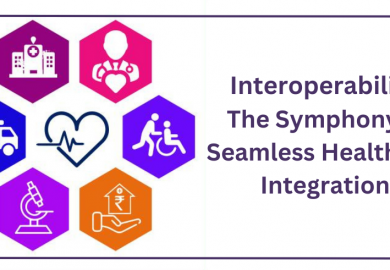How healthcare providers can counter the higher claim rejection or denials?
Healthcare practices are facing more and more claim rejections and denials by medical insurers than it happened a year or two ago. This means healthcare providers have to put more time and energy into accurate claim submissions to avoid delays or non-payment. But what changed? Why are the medical practitioners observing more rejected claims now than before? The short answer is – The Covid pandemic. People visited the doctor’s office less during the pandemic or delayed surgeries as they were afraid of getting Covid. But they still kept paying premiums for their insurances, this led to bumper profits for the medical insurance companies. Now that the insurers have been accustomed to these high profits, they will look forward to continually enjoy these which will make it more difficult for the providers to reimburse the cost for the services (they’re looking forward to continue to enjoy these high profit margins) option they are working towards is to make it more and more difficult for the providers to get paid.
Let’s first understand the difference between a rejection and a denial. A rejected claim is that which is returned for correction before it gains entry into the payer’s system. On the other hand, a denied claim is that which is accepted by the payer, reviewed, and returned to the providers with either no payment or only a partial payment. The claim can still be corrected and resubmitted, but the process often takes months, putting a strain on your cash flow.

So how does it impact medical practitioners?
According to research, each denied claim costs approx. $15 from the practitioner’s pocket. It is also a fact that every time a claim is denied, the chances of receiving full payment reduce significantly. To make matters worse, often, a patient cannot be invoiced for their cost-share until insurance has kicked in. The greater the interval between service and invoicing, the less likely the patient will pay.
As we are seeing, the complete game has changed. Earlier, the emphasis was on speedy submissions for prompt and complete payments, but now it is more on accuracy. And that accuracy bar is set high with automation replacing humans throughout the industry; any little error by the provider’s end gets instantly caught by computer auditing functions.
Another area rapidly changing in 2022 is the fact that many services by the provider are not fully covered by insurance companies, leading to patients bearing higher differential costs. This is changing so rapidly that most of the time, providers are not fully aware of how much deductible or copay will be there for a particular service. They usually have to wait for ERAs to know the exact amount. This is an issue for healthcare providers as the patients tend to be the most difficult payers and remove the option of estimating or collecting the patient’s portion early in the process.
The higher dividends by the patients also impact patient’s preference for your practice. A study shows that dissatisfied patients only pay up the amount 33% of the time and only come back 58% for more services. So what causes this dissatisfaction? 45% of the patients state that post-visit services like billing, insurance, etc. lead to huge dissatisfaction as a part of their patient journey. So even if the patients had excellent clinical care experience but negative billing experience, they will put it all out on social media or just dispute the bill under the New Surprises Act.
So what can practices do to keep patients happy?
The first thing that providers need to do is to embrace their medical billing team, whether they are in-house back-office teams or outsourced billing companies. And if everyone works together as a team, it will definitely lead to a better patient experience. An example would be the front office administrators understanding the billing issues and hence making fewer errors during registration or eligibility verification. This will lead to happier patients as they will know their likely share to pay at the forefront.
Practices can also assign someone to be incharge of patient’s financial experience. The person can meet the patient before intake, set realistic expectations about their costs, and assess any financial concerns. Since the person will be connected to the billing and collection process, he/she can establish a clear workflow for claims routing.
The practices should also strive for 100% accuracy with their claims and adapt intuitive and automated solutions built into their systems. They should also analyze the trends and study each and every rejection or denial to understand the reason and work to rectify the process accordingly. Details are particularly helpful as they let practices detect patterns and correct the errors. The billers should also be kept hyper-vigilant and constantly looking for industry developments. They must be proactive and always challenge the insurers when the rejection or denial seems unfair. The aim of the billing should always be 100% accuracy.
And that is where Elixir comes in with its powerful billing system, which is specially designed for healthcare practices. The intuitive and automated systems increase the accuracy of your claims and powerful reporting capabilities make business intelligence much easier.
Elixir Practice Management Suite is a comprehensive solution consisting of four modules that fit rightly into your healthcare business irrespective of your facility size and type. The Elixir Contact Center module helps manage the entire facility census and the patient intake process. At the same time, the Elixir EHR solution aims at delivering an end-to-end seamless patient care experience. The third module is Elixir Billing, and it effectively fetches data from any EHR platform to process medical claims and manages the entire revenue cycle. Elixir Patient Portal is the last module, and it provides an integrated experience for the patients.
Do fill out this contact form if you feel that Elixir will be an asset to your system.


